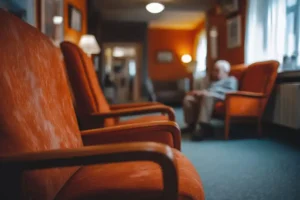06/21/2024
Beyond Bedsores: Recognizing the Signs of Nursing Home Abuse Injuries
The decision to move a loved one into a nursing home can be one of the most difficult decisions a family faces. You want to feel confident that the facility provides caring, expert services in a secure environment for your loved one. Unfortunately, not all facilities focus on the health, respect, and security of residents.
It is concerning that elderly abuse and negligence can occur in nursing homes and long-term care facilities. Families need to watch out for potential signs of neglect. For example, untreated bedsores can be a common sign of neglect.
It’s crucial to pay attention to bedsores and other signs of potential abuse and mistreatment. Noticing and acting quickly on these signs could be crucial in keeping your loved one safe and avoiding more harm.
This article focuses on key injuries and signs like bruises, fractures, cuts, burns, and incorrect medication to watch for in suspected cases of nursing home abuse or neglect that should not be ignored.
1. Unexplained Marks And Fractures
One indication that a nursing home resident could have suffered physical abuse is the appearance of bruises, fractures, or other unexplained injuries. Pay close attention to areas like the head, neck, arms, and wrists as clusters of bruising or marks in these zones can indicate rough handling, excessive force, or direct blows and strikes.
As we age, bruising occurs more frequently due to the thinning of skin. However, bruises appearing in distinct patterns or mirroring the shape of potential weapons like rods, tools, or objects are especially concerning. These types of marks raise immediate red flags that should be thoroughly documented and investigated.
Any head trauma, fractures, or potential brain injuries warrant urgent medical evaluation and intervention, as these types of injuries can have severe and long-lasting cognitive and physical impacts. Serious injuries like fractures or major wounds should immediately be assessed, whether abuse or neglect played a role.
2. Suspicious Burns
While accidental burns can occur during routine assisted care, suspicious or unexplained burns may point to abusive acts like cigarette scorches, exposure to excessive hot water temperatures, or improper chemical or physical restraint application.
Family members should be vigilant about any burn injuries in areas like the arms, legs, back, torso, or other parts of the body that seem out of the ordinary or inconsistent with expected nursing home safety protocols. Severe burns, oddly patterned burns, or clusters of burn marks demand further investigation.
3. Uncharacteristic Cuts and Lacerations
Minor scrapes, abrasions, and superficial cuts can happen from time to time in nursing homes, even when proper care and protocols are followed. However, deeper cuts and lacerations – especially those appearing in locations that could potentially indicate defensive wounds to the hands, forearms, or upper body – may be signs of physical abuse, assault, or an altercation.
Any significant lacerations or open wounds requiring medical treatment and intervention should be evaluated closely by loved ones, and the stated cause or origin of the injury should be clearly understood, documented, and corroborated.
5. Medication Errors & Mismanagement
Proper management of medication is critical to your loved one’s well-being. Improper administration of medication may include overmedication, abrupt stoppages, or intentional withholding. This can have severe detrimental effects on the physical, cognitive, and emotional well-being of nursing home residents.
Family members should carefully watch for any sudden, unexplained changes in their loved one’s typical attitude, awareness levels, lethargy, demeanor, or overall conduct that could potentially indicate improper medication administration errors or intentional mismanagement is occurring.
Medication-related issues like this can sometimes be harder to detect than physical injuries but can be equally as troubling and unsafe. Bring any concerns about potential medication mishandling to the immediate attention of facility staff and medical team. It is critical that any medication issues are addressed promptly to prevent any negative impacts on your loved one’s health.
6. Trust Your Instincts
Uncovering signs of potential abuse or neglect in a nursing home can be a difficult and emotional experience for families. As the advocate for your loved one, it’s imperative to remain vigilant.
If something seems amiss in their physical appearance, mental/emotional behavior, living conditions, or overall well-being, immediately notify staff and the director. Signs of abuse warrant a closer examination – do not simply dismiss or rationalize away these gut feelings and concerns.
Sudden weight loss, dehydration, poor hygiene, emotional withdrawal, or uncharacteristic conduct can all indicate potential neglect, mistreatment, abuse, or inadequate care occurring out of view. These types of subtle warning signs and changes cannot be ignored. As the loved one who likely knows the resident best, you must take steps to have these issues addressed swiftly.
If you do suspect your loved one is being abused or neglected based on any of the indicators above, taking immediate action offers the best path to protecting them from further harm.
Meticulous documentation of all concerning observations, injuries, incidents, or medication issues through written logs, photographs, and detailed notes is imperative to building a record. This paper trail can help substantiate claims and validate any formal complaints or legal action that may be necessary.
Explore Your Legal Options with Deuterman Law Group
If you feel that your loved one has been the victim of abuse or neglect in a North Carolina nursing home, please contact the Deuterman Law Group immediately.
Our nursing home neglect attorneys will help you report the issue to the proper authorities, such as the county Adult Protective Services office. And we’ll gather information to assist in the investigation and prepare a claim against the owners and operators of the nursing home.




